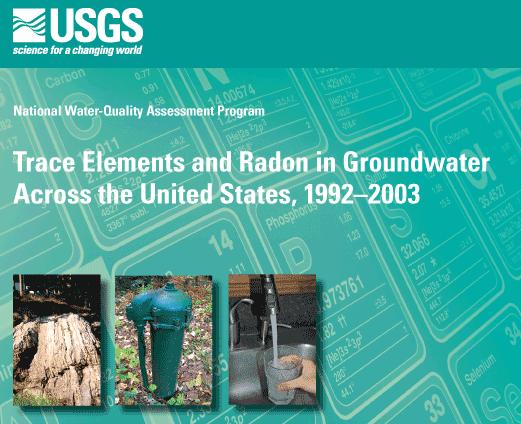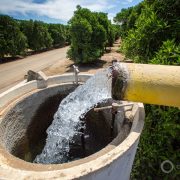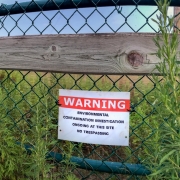USGS Report: Trace Elements Exceed Health Standards in 20 Percent of U.S. Water Wells
Utilities are required by law to treat water to national standards, but no such controls exist for private wells, where the risk from contaminants is greater.
By Brett Walton
Circle of Blue

Nearly one in five wells in the United States contains traces of at least one element that exceeds human health standards set by the U.S. Environmental Protection Agency (EPA), according to a U.S. Geological Survey (USGS) study of more than 5,000 public, private, and monitoring wells.
When multiple elements are found in the same water source at concentrations higher than national health standards — as is the case in one in ten U.S. wells — this poses an even greater health concern, because they can interact to become even more toxic than each element would be individually. Furthermore, trace elements exceed health standards in groundwater more often than do pesticides or volatile organic compounds, such as fuels and solvents.
— Joe Ayotte,
USGS hydrologist
Public utilities are required by the Safe Drinking Water Act to treat water to standards set by the EPA. But even those systems can be out of compliance. For instance, in July, Circle of Blue reported that nearly 1,000 water utilities — most of which are small systems serving fewer than 10,000 people — remain in violation of the EPA’s standard for arsenic, a decade after the rule was first submitted.
However, the greater health risk is arguably with those individuals not connected to a public utility system, since privately owned wells do not have the same federal requirements. Private wells are not regulated at the national level, and there are only a few cases in which private wells are regulated at state and local levels. Nearly 43 million people in the U.S. supply their own water, with some 98 percent using private wells, according to estimates from the USGS in its 2005 national water use survey.
“By and large, most [private well users] are unaware of a broad group of contaminants that could be affecting their health,” said Joe Ayotte, a USGS hydrologist and the lead author of the 2011 study, in an interview with Circle of Blue.
Elements of Concern
Of the elements regulated by the EPA, the USGS study found that arsenic (in 7 percent of samples) and uranium (4 percent) were most prevalent in the wells it tested. Long-term exposure to high levels of arsenic — an element most commonly found in the Western U.S, the upper Midwest, and the Northeast — can cause cancers of the skin, bladder, and lungs, as well as skin lesions. Uranium exposure affects the kidneys.
Manganese, an element with EPA standards set for aesthetic qualities — such as the taste and color of water — but not for human health, was present in 12 percent of the wells, most of which were in the Eastern part of the country.
Coincidentally, the element that showed up most frequently is currently being considered for EPA regulation. Radon, a radioactive gas produced when uranium decays, occurred in 65 percent of samples at levels higher than a proposed EPA maximum standard of 300 picocuries per liter. Only 2.7 percent of samples exceeded the less stringent “alternative” standard for radon of 4,000 picocuries per liter. Radon was mainly found in the Northeast and in the central and southern Appalachians.
(For reference, one picocurie is equal to the decay of about two radioactive atoms per minute.)
Problems Per Region
As it turns out, groundwater in almost every region of the U.S. will yield trace elements, but geography, geology, and geochemistry are primary variables for the number and potency of the contaminants. The study found higher concentrations and a greater number of trace elements in the Western U.S.
“In the West,” Ayotte said, “the groundwater is deeper, older, and has had a longer time to dissolve trace elements from the surrounding rock. Higher evaporation rates also help to build up concentrations in the water.”
Yet another factor is the composition of an aquifer. Aquifers made of unconsolidated sand and gravel — which are more common to the west of the Mississippi River — had more potential for hazardous concentrations compared to sandstone, carbonate, or volcanic aquifers.
Ayotte said that the study, part of the USGS’s National Water Quality Assessment Program, was a general overview. The USGS is now conducting local and regional studies, as well as creating models to predict trace element contamination at the local and regional levels.
Brett Walton is a Seattle-based reporter for Circle of Blue. Contact Brett Walton
Brett writes about agriculture, energy, infrastructure, and the politics and economics of water in the United States. He also writes the Federal Water Tap, Circle of Blue’s weekly digest of U.S. government water news. He is the winner of two Society of Environmental Journalists reporting awards, one of the top honors in American environmental journalism: first place for explanatory reporting for a series on septic system pollution in the United States(2016) and third place for beat reporting in a small market (2014). He received the Sierra Club’s Distinguished Service Award in 2018. Brett lives in Seattle, where he hikes the mountains and bakes pies. Contact Brett Walton










Arsenic in water is the least of our worries. How about something you probably eat everyday, like chicken! Chicken has way more arsenic. Check out this non-commerical, science based website all about arsenic in chickens
http://nutritionfacts.org/videos/arsenic-in-chicken/